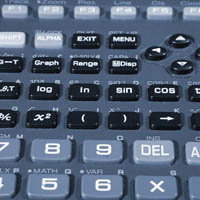Unravelling the secrets of the numerical brain
How our brain associates abstract symbols such as Arabic digits with precise numbers is the subject of a new piece of research from a team of French and Italian scientists. The results of the study, which is partly funded by the EU via a Marie Curie grant, is published in the latest edition of the journal Neuron. Numbers can be represented in many ways; by digits (1,2,3), by written or spoken words (one, two, three) or by the relevant number of dots or some other mark. Whether the brain processes numbers differently depending on how they are represented has interested scientists for some time. In this study, Manuela Piazza and colleagues used functional Magnetic Resonance Imaging (fMRI) to study the levels of activity in the brains of healthy adults as they focused on sequences of numbers. The test subjects were first shown sequences of three numbers which were all close to one another, such as 17, 18 and 19. For some subjects, the numbers were presented in Arabic digits, while others saw the relevant number of dots. When the patients started looking at the sequences, the imaging showed up activity in the parietal region of the subjects' brains. As the subjects got used to the stimulus, the level of activity subsided. The scientists then switched to another sequence of numbers far away from the original numbers, such as 47, 48 and 49. For some subjects, this second set of numbers was shown in the same format as the first set, while for others the format changed, meaning that some people who had been seeing Arabic digits now saw dots, and vice-versa. In all cases, the same part of the subjects' brains was instantly reactivated when the number sequence changed, regardless of the format used to display the numbers. According to the researchers, this indicates that the region is processing numerical information. 'Our results indicate an important role for parietal cortex in the coding of symbolic and nonsymbolic quantities,' the researchers write. To examine further whether the subjects' brains were really reacting to numerical quantity, the researchers occasionally added a 'deviant' number into the second number sequence. In some cases this deviant was close to the sequence, while in other cases it was far away; for subjects seeing the 17-19 sequence, the close deviant was 20 and the far deviant was 50. The scientists found that the deviant number caused a much larger spike in activity if it was far away from the main sequence than if it was closer, clear evidence that the subjects' brains were processing numerical qualities. 'Our results show that, at least in the adult brain, numerical symbols and nonnumerical numerosities converge onto shared neural responsibilities,' the authors write. However, exactly how this happens remains a mystery. 'Perhaps we attach meaning to symbols by physically linking populations of neurons sensitive to symbol shapes to pre-existing neural populations holding a nonsymbolic representation of the corresponding preverbal domain (e.g. numerosity,' the researchers speculate. The scientists believe that their results could increase our understanding of how numerical representation in the brain develops in children, and could be used to help people suffering from dyscalculia, a condition where sufferers are unable to understand, remember and manipulate numbers.
Countries
France, Italy



